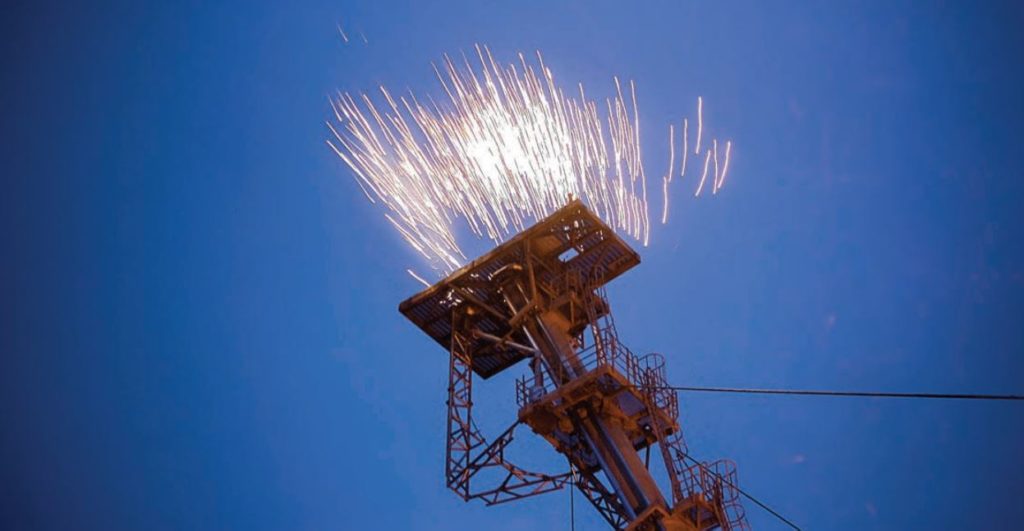
Feature image courtesy of Zeeco, Inc.® – all rights reserved.
On-demand ignition systems are designed to provide an alternative to continuously burning flare pilots. When combined with flare gas recovery (so that the flare is not permanently required), an on-demand ignition system can lead to substantial emissions reductions.
An on-demand system deploys an ignition source to the gas mixture when required. This is achieved through the use of a guide tube and pellet discharge system (compressed air or mechanical device).
A range of pellet technologies have been developed, using either an explosive charge (ballistic type) or material that when it connects with a striker plate produces a shower of sparks. A pellet collector recovers spent pellets so they do not become a dropped-object hazard.
The delivery system uses a compressed gas or mechanical device launch system to propel a pellet through a guide tube until it strikes a specifically designed plate. As plate is affixed close to the flare tip, sparks produced during pellet impact shower the flare tip exit and ignite the gas stream.
Pellets with explosive load has a fuse released at the exit of the guide tube and provide a shower of sparks upon explosion without a need for a striker plate.
It has applications where flare demand is low or flare gas recovery is installed.
The feature image shows the shower of sparks produced when the pellet engages with a strike plate located close to the flare tip (Image courtesy of Zeeco, Inc.® – all rights reserved).
Advantages
Provides the ignition upon demand and eliminates the need for flare pilots
When used with flare gas recovery, it allows significant emission reductions and enables zero flaring approach
Can be installed on most flare tip types
Allows for simpler maintenance as all moving parts and electronics can be mounted at grade, not by the flare tip
Can achieve SIL-2 rating with 99.8% reliability
Works effectively under challenging weather conditions
Simple installation – requires power connection, in some cases - instrument air supply
Can be retrofitted to existing flares
Limitations
Requires flare gas recovery unit and liquid sealDevice that directs the flow of relief gases through a liquid (normally water) on the path to the flare burner, used to protect the flare header from air infiltration or... Learn more... in the flare system to work effectively
Pellets containing explosive load introduce safety and logistics challenges
System is not 100% reliable, there is a risk of unignited release
Case study
Oil processing FPSO has commissioned a flare gas recovery unit with a low-pressure ballistic ignition system, which provides the sparks for ignition once the pellet detonates after exiting the guide tube.
Measures were taken to ensure high reliability of the system – it was configured to launch two pellets in sequence and start pilot gas supply prior to launch to ensure the flare was lit. Less than 50 pellets were launched since commissioning the system, however, no reliability issues were encountered thus far. It was considered to change the mode of operation to a single pellet operation due to higher than expected performance.
The installation of a ballistic ignition package enabled the commissioning of flare gas recovery unit, which was estimated to reduce the carbon footprint of the facility by 2kg CO2e/boe.
Ensuring that a flare ignites when required is critical to safety. In addition, periods of unlit venting may increase the impact of the flare as a source of greenhouse gases as methane has a higher global warming potential that carbon dioxide. Where a flare is used periodically there are a range of technology solutions to ensure ignition on demand.